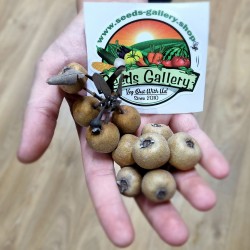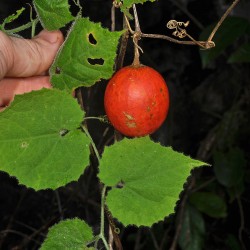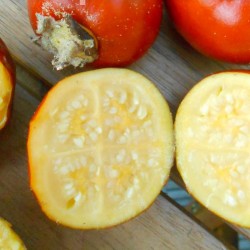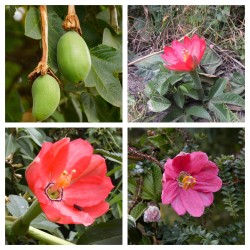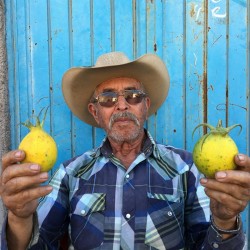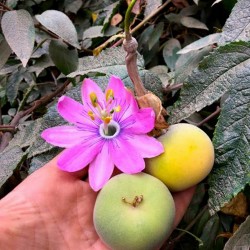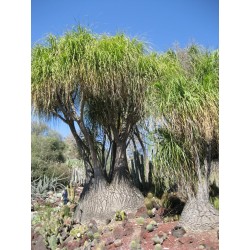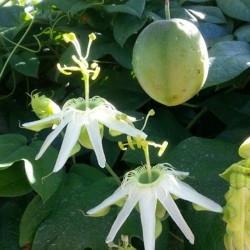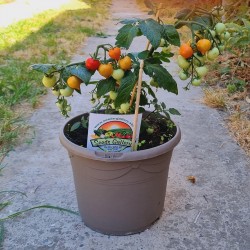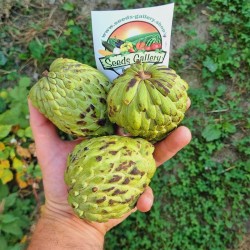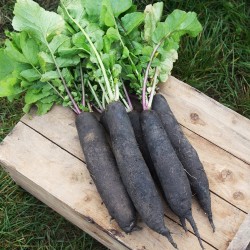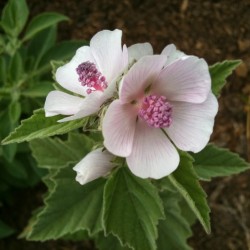Seeds Gallery Com,
5/
5
<h2 class=""><strong>Marsh-mallow Seeds (Althaea officinalis)</strong></h2>
<h2><span style="color: #f80000;" class=""><strong>Price for Package of 350 (1g) seeds.</strong></span></h2>
<p style="color: #202122; font-size: 14px;"><i><b>Althaea officinalis</b></i>, or<span> </span><b>marsh-mallow</b>,<sup id="cite_ref-BSBI07_2-0" class="reference" style="font-size: 11.2px;"></sup><span> </span>is a<span> </span>perennial<span> </span>species indigenous to<span> </span>Europe,<span> </span>Western Asia, and<span> </span>North Africa, which is used in<span> </span>herbalism<span> </span>and as an<span> </span>ornamental plant. A confection made from the root since<span> </span>ancient Egyptian<span> </span>times evolved into today's<span> </span>marshmallow<span> </span>treat, <sup id="cite_ref-S&S_3-0" class="reference" style="font-size: 11.2px;"></sup>but most modern marshmallow treats no longer contain any marsh-mallow root.<sup id="cite_ref-4" class="reference" style="font-size: 11.2px;"></sup></p>
<p>The stems, which die down in the autumn, typically grow 90 to 120 cm (3 to 4 ft), but can reach<span> </span>2.0 m (<span class="frac" role="math">6<span class="sr-only">+</span><span class="num" style="font-size: 11.2px;">1</span>⁄<span class="den" style="font-size: 11.2px;">2</span></span> ft) and put out only a few lateral branches.<sup id="cite_ref-5" class="reference" style="font-size: 11.2px;">[5]</sup><span> </span>The leaves are shortly<span> </span>petioled, roundish, ovate-cordate, 50 to 75 mm (2 to 3 in) long, and about<span> </span>30 mm (<span class="frac" role="math">1<span class="sr-only">+</span><span class="num" style="font-size: 11.2px;">1</span>⁄<span class="den" style="font-size: 11.2px;">4</span></span> in) broad, entire or three to five lobed, irregularly toothed at the margin, and thick. They are soft and velvety on both sides, due to a dense covering of stellate hairs. The flowers are shaped like those of the<span> </span>common mallow, but are smaller and of a pale colour, and are either<span> </span>axillary, or in<span> </span>panicles, more often the latter.</p>
<p>The<span> </span>stamens<span> </span>are united into a tube, the anthers, kidney-shaped and one-celled. The flowers are in bloom during August and September, and are followed, as in other species of this order, by the flat, round fruit which are popularly called "cheeses".</p>
<p>The<span> </span>common mallow<span> </span>is frequently called "marsh mallow" in colloquial terms, but the true marsh mallow is distinguished from all the other mallows growing in<span> </span>Great Britain<span> </span>by the numerous divisions of the outer<span> </span>calyx<span> </span>(six to nine cleft), by the hoary down which thickly clothes the stems and foliage, and by the numerous panicles of blush-coloured flowers, paler than the common mallow. The roots are perennial, thick, long and tapering, very tough and pliant, whitish yellow outside, white and fibrous within.</p>
<p>The generic name,<span> </span><i>Althaea</i>, is derived from the Greek<span> </span><span lang="grc" title="Ancient Greek (to 1453)-language text">ἄλθειν</span><span> </span>(to cure), from its supposed healing properties.<sup id="cite_ref-S&S_3-1" class="reference" style="font-size: 11.2px;">[3]</sup><span> </span>The name of the family,<span> </span>Malvaceae, is derived from the Latin<span> </span><i><i>malva</i></i>, a generic name for the mallows and the source of the English common name<span> </span><i>mallow</i>.</p>
<p>Most of the mallows have been used as food, and are mentioned by early classic writers with this connection. Mallow was an edible vegetable among the Romans; a dish of marsh mallow was one of their delicacies.<span> </span>Prospero Alpini<span> </span>stated in 1592 that a plant of the mallow kind was eaten by the<span> </span>Egyptians. Many of the poorer inhabitants of<span> </span>Syria<span> </span>subsisted for weeks on herbs, of which marshmallow is one of the most common.<sup class="noprint Inline-Template Template-Fact" style="font-size: 11.2px;">[<i><span title="This claim needs references to reliable sources. (April 2019)">citation needed</span></i>]</sup><span> </span>When boiled first and fried with<span> </span>onions<span> </span>and<span> </span>butter, the roots are said to form a palatable dish,<sup id="cite_ref-6" class="reference" style="font-size: 11.2px;">[6]</sup><span> </span>and in times of scarcity consequent upon the failure of the crops, this plant, which grows there in great abundance, is collected heavily as a foodstuff.</p>
<h3 style="color: #000000; font-size: 1.2em;"><span class="mw-headline" id="Phytochemicals">Phytochemicals</span></h3>
<p>Chemical constituents include<span> </span>altheahexacosanyl lactone<span> </span>(<i>n</i>-hexacos-2-enyl-1,5-olide),<span> </span>2β-hydroxycalamene<span> </span>(altheacalamene) and<span> </span>altheacoumarin glucoside<span> </span>(5,6-dihydroxycoumarin-5-dodecanoate-6β-<small style="font-size: 11.9px;">D</small>-glucopyranoside), along with the known phytoconstituents<span> </span>lauric acid,<span> </span>β-sitosterol<span> </span>and<span> </span>lanosterol.<sup id="cite_ref-7" class="reference" style="font-size: 11.2px;">[7]</sup></p>
<h2 style="color: #000000; font-size: 1.5em;"><span class="mw-headline" id="Uses">Uses</span></h2>
<h3 style="color: #000000; font-size: 1.2em;"><span class="mw-headline" id="Herbal_medicine">Herbal medicine</span></h3>
<p>The leaves, flowers and the root of<span> </span><i>A. officinalis</i><span> </span>(marshmallow) have been used in<span> </span>traditional herbal medicine. This use is reflected in the name of the genus, which comes from the<span> </span>Greek<span> </span><span lang="grc" title="Ancient Greek (to 1453)-language text">ἄλθειν</span><span> </span>(<i><i>althein</i></i>), meaning "to heal."<sup id="cite_ref-S&S_3-2" class="reference" style="font-size: 11.2px;"></sup></p>
<p>Marshmallow was traditionally used as relief for irritation of<span> </span>mucous membranes,<sup id="cite_ref-8" class="reference" style="font-size: 11.2px;">[8]</sup><span> </span>including use as a<span> </span>gargle<span> </span>for mouth and throat<span> </span>ulcers<span> </span>and<span> </span>gastric ulcers.<sup id="cite_ref-9" class="reference" style="font-size: 11.2px;">[9]</sup><span> </span>In Russia, the root syrup is sold without a<span> </span>prescription<span> </span>by<span> </span>pharmacies, with intent to treat minor respiratory ailments.<sup id="cite_ref-10" class="reference" style="font-size: 11.2px;"></sup></p>
<h3 style="color: #000000; font-size: 1.2em;"><span class="mw-headline" id="Culinary">Culinary</span></h3>
<p>The young leaves can be cooked. The flower buds can be pickled.<sup id="cite_ref-:0_11-0" class="reference" style="font-size: 11.2px;">[11]</sup><span> </span>The roots can be peeled, sliced, boiled and sweetened to make candy. Water used to boil any part of the plant can be used as an<span> </span>egg white<span> </span>substitute.<sup id="cite_ref-:0_11-1" class="reference" style="font-size: 11.2px;"></sup></p>
<p>The root extract (halawa extract) is sometimes used as flavoring in the making of a Middle Eastern snack called<span> </span><i>halva</i>. The later French version of the recipe, called<span> </span><i><i>pâte de guimauve</i></i><span> </span>(or<span> </span><i><i>guimauve</i></i><span> </span>for short), included an egg white<span> </span>meringue<span> </span>and was often flavored with<span> </span>rose water.<span> </span><i><i>Pâte de guimauve</i></i><span> </span>more closely resembles contemporary commercially available<span> </span>marshmallows, which no longer contain<span> </span><i>Althaea officinalis</i>.</p>
<p style="color: #202122; font-size: 14px;"><br /><br /><br /><br /></p>
<br />
<script src="//cdn.public.n1ed.com/G3OMDFLT/widgets.js"></script>
VE 219 (1g)


